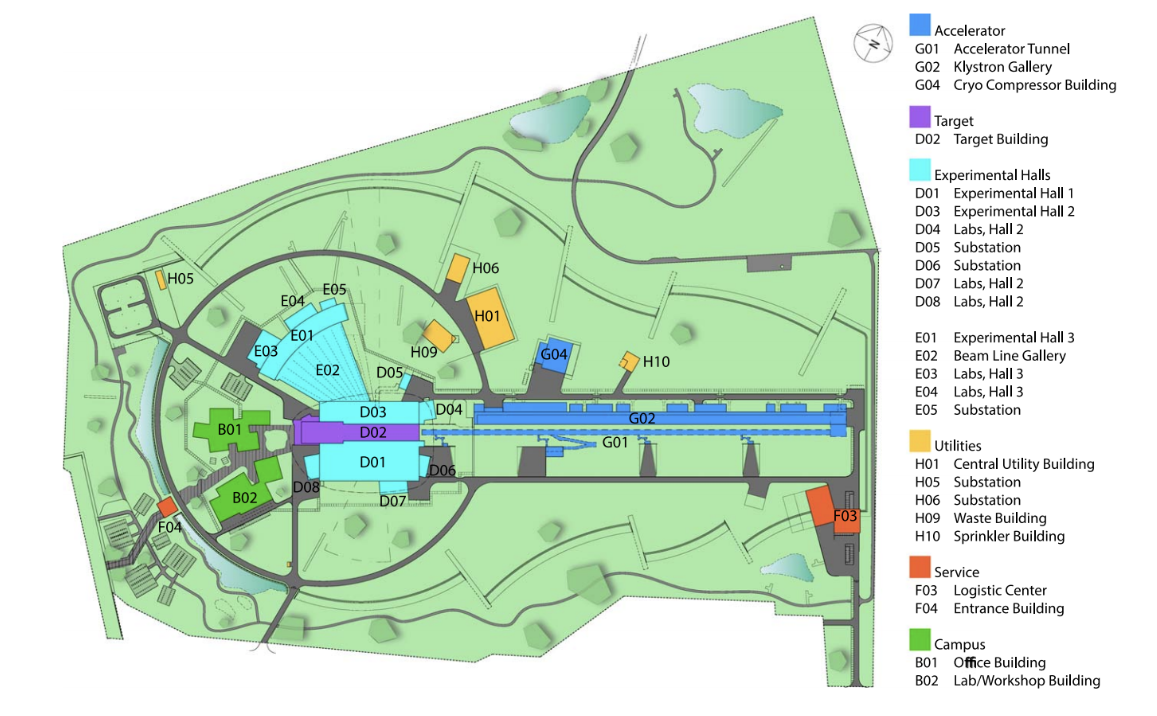European Spallation Source, at the forefront of particle physics with neutrons and neutrinos
spallation
Progress in particle physics has traditionally been achieved by a symbiosis of experiments at the energy and intensity frontiers and model-building. This has led to the current situation of the Standard Model (SM) representing our best knowledge of particle physics, but which leaves a number of open questions to be resolved. These include the composition of dark matter, the dynamic origin of the observed matter–antimatter asymmetry, and the fine-tunings needed for a light Higgs and no observable CP violation in the strong sector. Furthermore, the SM is itself known not to be complete by the existence of massive neutrinos and offers no explanation for the smallness of their masses. There thus exist many problems requiring hitherto unobserved particles and physics processes and, consequently, appropriate facilities are needed.

The European Spallation Source (ESS), currently under construction in Lund (Sweden), will provide a chance to answer some of these questions as it will have the capabilities to observe new physics. At design specifications, the ESS will operate at 5 MW using a proton linac of beam energy 2 GeV, leading to spallation neutrons that are steered into a suite of instruments. In addition to providing the most intense neutron beams, the ESS also provides a large neutrino flux.
What is spallation?
Spallation is a type of nuclear reaction in which the interacting nuclei disintegrate into a large number of protons, neutrons and other light particles, rather than exchanging nucleons between them. It is thought that most of the nuclei of light elements, such as boron, are made in this way. Spallation reactions of this type are thought to occur in interstellar space when a high-energy particle, such as a proton, hits a nucleus.
On Earth, at spallation sources, when a proton hits a nucleus, charged pions result. Pions can be positively or negatively charged or neutral. Pions (π) belong to the same class of subatomic particles of protons and neutrons, namely, hadrons. Hadrons are not truly elementary particles, as they consist of quarks: three in the case of protons and neutrons, or two in the case of pions, a quark and an antiquark. Charged pions decay into muons (μ) and, importantly, neutrinos (ν). Neutrinos exist in three forms, one in association with the electron, one with the muon and one with the tau particle. Each form has its own antiparticle.
At spallation sources, both π+ and π– are produced in proton-nucleus collisions in the target. While the resulting π– are efficiently absorbed by nuclei before they can decay, the produced π+ lose energy as they propagate in the target and will eventually decay at rest into π+→ μ+νμ, followed in close spatial vicinity by the decay of the positive muon into a positron, an electronic neutrino and a muonic antineutrino. Thus, three neutrino flavours are engendered for each π+ created.
Unsurprisingly, given the opportunities provided by the ESS, a number of proposed experiments and activities at the ESS are being developed by the community. Researchers describe in a new paper 1 the various ideas put forward. They present concepts and expected performances of possible experiments.
Some of the proposed experiments can be realized within the mission of the ESS as a user facility and require the installation of state-of-the-art instrumentation in line with the usual investment at such facilities, as for example a neutron beam line for particle physics. Some neutrino-nucleus scattering experiments are already under construction to be ready for early ESS operation. Other projects require additional design studies and further investment in the ESS and experiment infrastructure. Such investment includes both the provision of a high-intensity neutron moderator and funding for large scale experiments.
Main projects
Proposed activities include the use of dedicated instruments for long-term projects such as ANNI and HIBEAM/NNBAR. The ANNI project can encompass precision measurements of neutron properties, including decays and experiments with ultra-cold neutrons (UCN), such as a search for a non-zero electric dipole moment of the neutron. The HIBEAM/NNBAR program provides a series of searches for baryon number transformation processes via neutron conversions, with increasing sensitivity and ultimately providing an improvement in sensitivity of three orders of magnitude compared with the earlier searches.
The possibility of a high-flux dedicated UCN source is also considered and it is currently under study as a part of the HighNESS project.
The nuESS experiment can exploit the ESS’ ability to provide the largest pulsed neutrino flux suitable for the detection and measurement of coherent elastic neutrino-nucleus scattering. The ESSnuSB project is a large scale endeavour to use the proton linac to produce the world’s most intense neutrino beam to measure neutrino oscillation parameters and the leptonic CP phase.
The proposed experimental program of particle physics illustrates the unique scientific potential of the ESS. The realisation of this programme would place the ESS at the forefront of particle physics with neutrons and neutrinos.
Author: César Tomé López is a science writer and the editor of Mapping Ignorance
Disclaimer: Parts of this article may have been copied verbatim or almost verbatim from the referenced research paper/s.
References
- H. Abele at al (2023) Particle physics at the European Spallation Source Physics Reports doi: 10.1016/j.physrep.2023.06.001. ↩